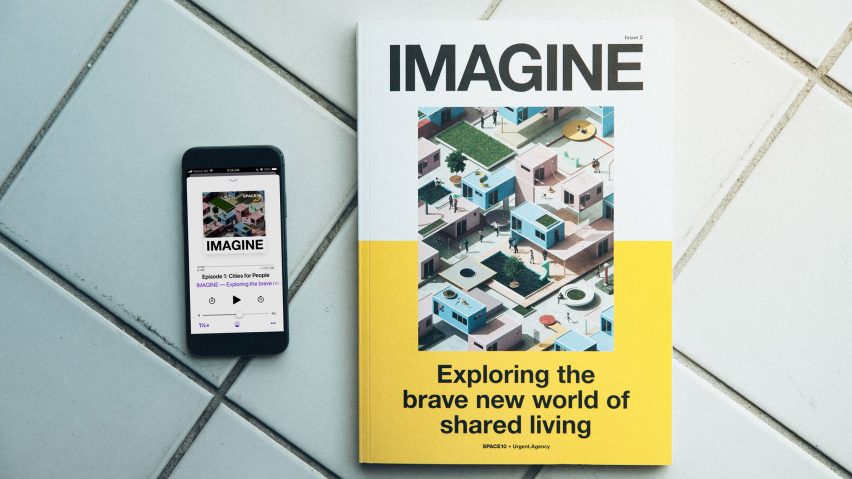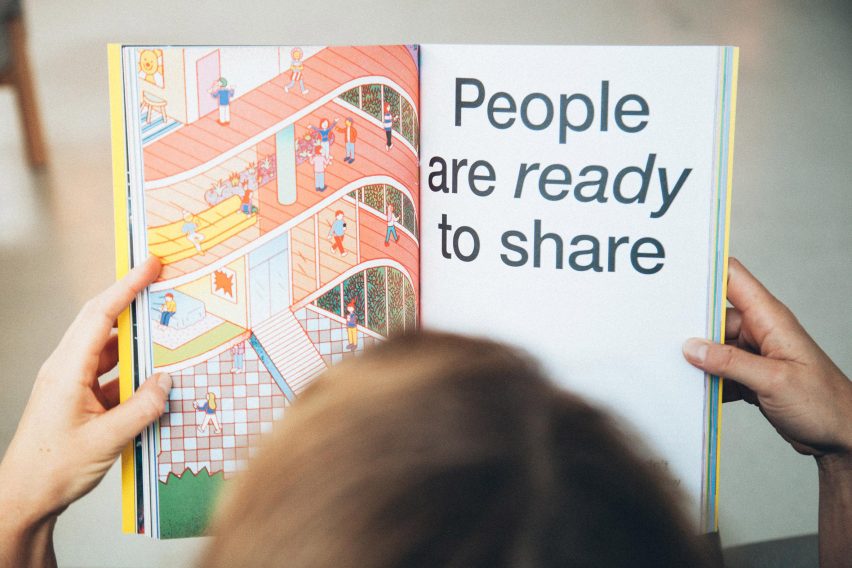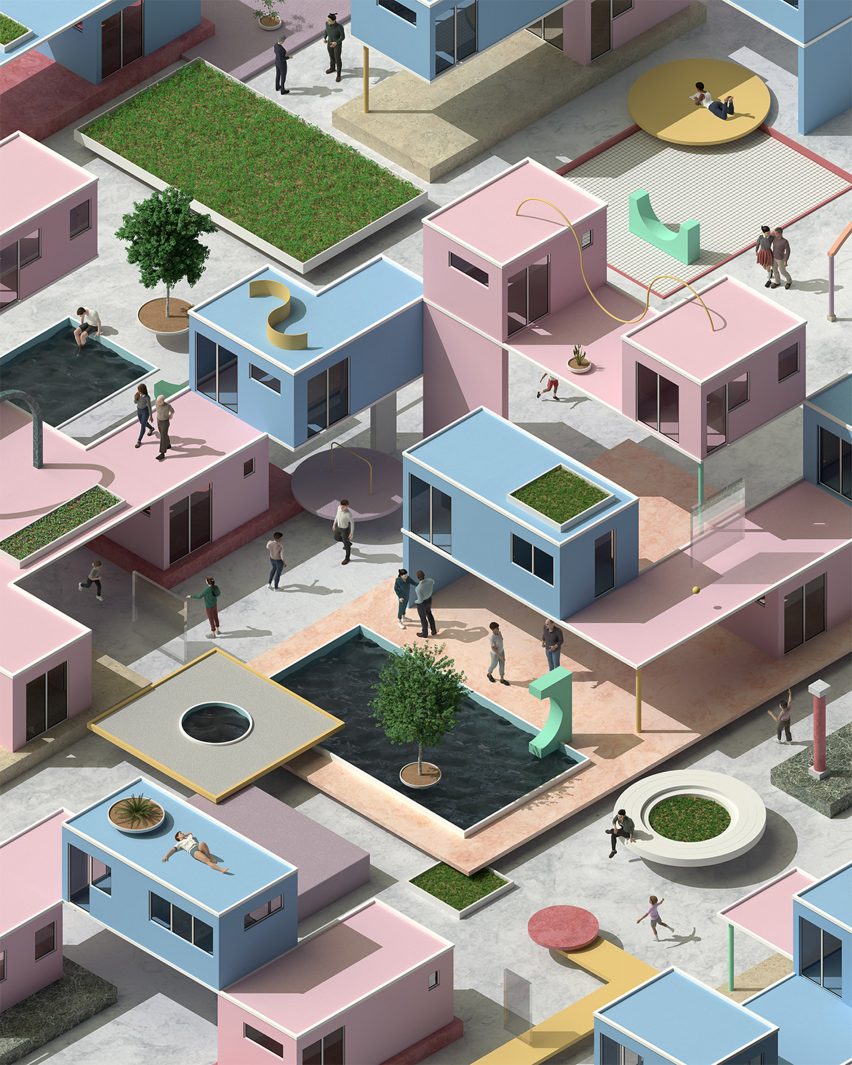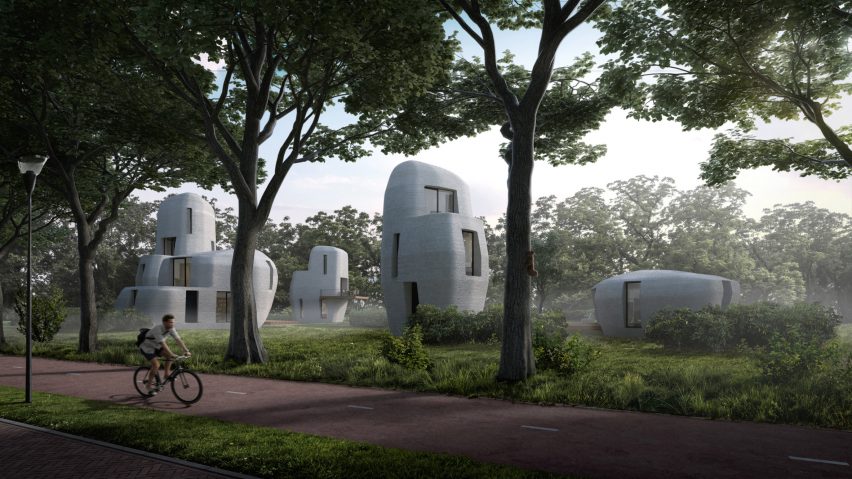
Digital technology essential to success of co-living, says Space10
Blockchain, 3D printing and other digital technologies are key to making shared housing models take off, according to research by IKEA's innovation lab Space10.
In the report Imagine: Exploring the Brave New World of Shared Living, the Copenhagen-based studio states that digital platforms and devices are essential to making co-living widespread enough to impact the global housing crisis.
"Digital platforms can help challenge the entire housing industry of today," explained Space10 co-founder Simon Caspersen.
"Our current answers seem insufficient and outdated; after all, the housing debate is currently narrowly focused on finding ways to build more homes," he told Dezeen. "As important as that is, we also need to think hard about new ways of living and turn our challenges into opportunities."
Sharing economy lays foundations for co-living
The report, produced in collaboration with Urgent Agency, sets out four criteria that it claims can help co-living models become more widely adopted. Digital technology is one of them.
Under the heading Mobilise Digital Tools, it states that digital technology can transform the design, construction and management of co-living developments.

"Technology can help enable shared living," reads the report.
"The rise of the sharing economy suggests that people are ready to share more than we thought – and that there is a bigger potential still to be harnessed," it says.
"And, speaking more specifically about the design and construction industries, a wave of new tools and opportunities are also in the making. From augmented reality to community-matchmaking processes, there are some interesting possibilities."
Digital apps support shared living
The research suggests that blockchain technology offers a new way to design and produce contracts, while the "makerspace and fab lab movement" could pave the way for more local, custom-made forms of production.
Examples include a project by Eindhoven University of Technology to 3D print housing for rent and open-source construction pioneer Wikihouse.
The research also identifies a range of existing digital apps that support shared living. These include Borigo, which encourages people living in shared housing to communicate, and Omni, a three-app platform that enables a sharing economy for occasionally used possessions such as bicycles and vacuum cleaners.

The report claims that, together, these technologies have the potential to completely disrupt the housing market – although they need to be further developed and promoted before this will happen.
"Viewed together, the list of new tools and digital services can change the design, planning and operation of communities – and can be used to develop more shared living projects," says the report.
"However, there is a long way to go before we realise their potential. We need to push the technologies and their applications forward in the world of finance, design, construction and operations, as well as potential communities in the making."
Cities must double in capacity by 2050
Imagine was released on Space10's website on 12 October and is available to download for free.
It is organised into two sections: the first chapter explores why shared living is necessary, while the second sets out guidelines for making co-living systems work. There is also an accompanying podcast series.
According to Caspersen, the research is based on the understanding that the world's cities need to almost double in size to accommodate the influx of people expected by 2050 – more than 2.5 billion are predicted.

"This means we need to build a city the size of New York every second month for the next 35 years, which is not realistic," he explained.
"And with space becoming scarcer and the cost of housing rising, billions of people could struggle to find an adequate and affordable place to live in our future cities," he added.
"Together the publication and podcast aim to inspire people to rethink how we design our future cities, future neighbourhoods and future homes in order to improve our quality of life and tackle some of the pressing challenges we'll face in our new urban realities."
Designers increasingly promoting co-living
Space10 was set up in 2015 as an offshoot of IKEA, to research how people will live in cities in the future. Since then the studio has released a range of innovative projects, from futuristic food to a vision for mobile facilities.
The studio first revealed its research into co-living last year, with the launch of a website for researching and developing concepts for future shared living spaces.
It is not the only design studio promoting shared living. Studio Weave recently authored a publication revealing that the model can appeal to a wide range of demographics, while Architizer co-founder Matthias Hollwich is promoting co-living as a new approach to retirement.